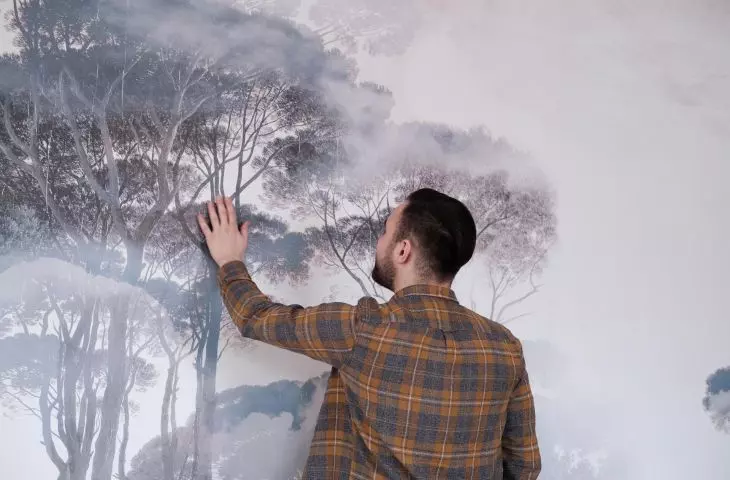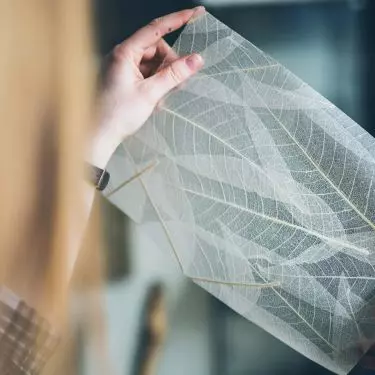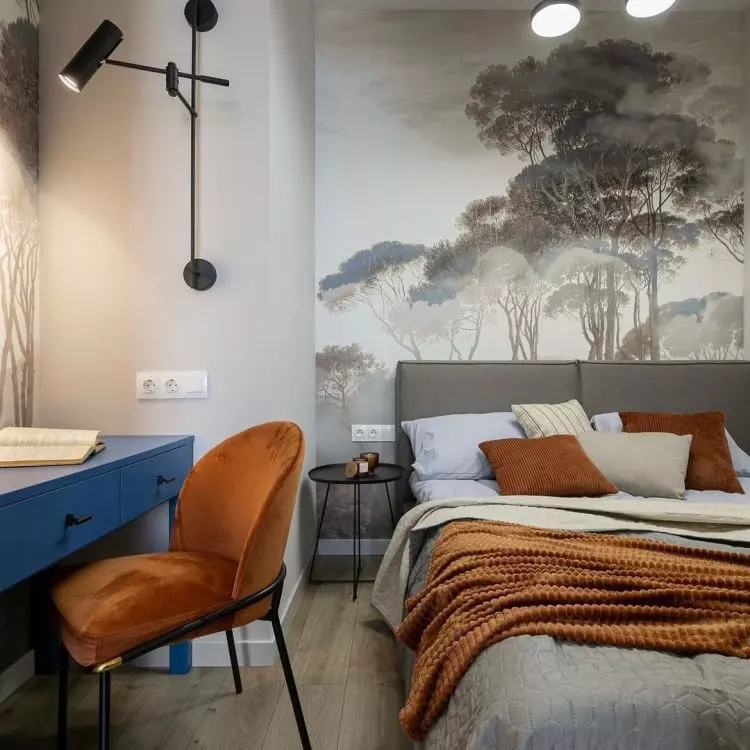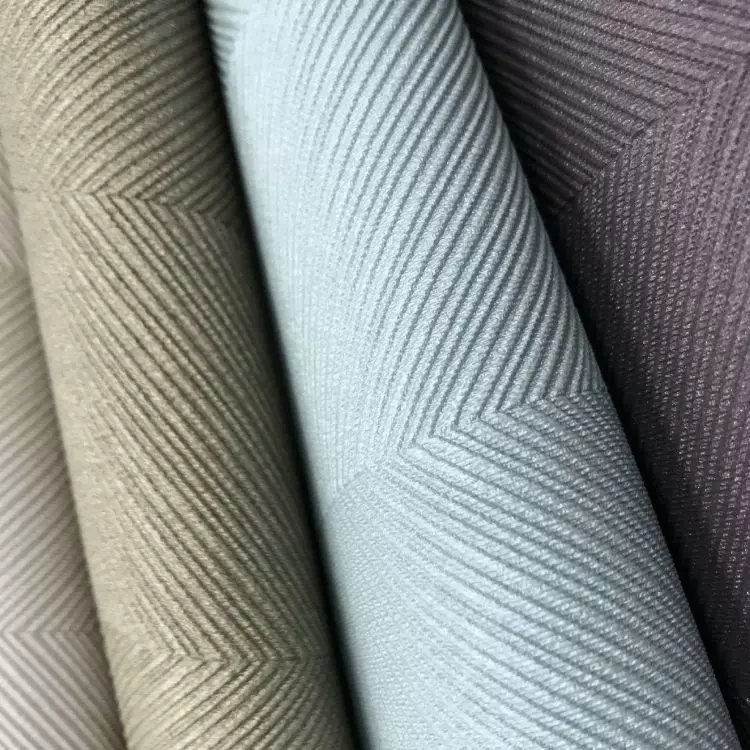Whether you're planning to refresh your living room, bedroom or preparing a room for a child, choosing wallpaper requires some consideration and an informed approach. In this article, we'll take a look at the various aspects involved in choosing wallpaper, from types and patterns to style, to help you make the best decision according to your preferences and needs. We will also discuss practical tips for wallpaper application.
Wallpaper from which company you should buy?
Choosing a reliable wallpaper manufacturer is extremely important to make the arrangement aesthetically pleasing and durable. You can buy wallpaper, for example, from Atpol, which offers wall coverings made entirely of natural ingredients, such as hay, petals of field flowers, coffee or lavender. Other trusted wallpaper manufacturers are kith2kin and Wall Art. Before making a decision, it's a good idea to read other customers' reviews and consult a professional. Full list of recommended manufacturers can be found in the search engine of the Products for Home portal under the keyword "wallpaper".
How to lay wallpaper?
Preparation of the surface
Make sure the wall is clean, dry and smooth. Remove any bits of old wallpaper, peel off any unevenness, fill holes and smooth the surface. Clean the wall of dust and dirt.
Measure and cut wallpaper
Measure the wall you want to put wallpaper on, and cut it to the appropriate length, adding a stock at the top and bottom. You can do this with an upholstery knife and a ruler.
Glue preparation and glue application
If you are using traditional wallpaper (such as paper one), prepare the glue according to the instructions on the package. Evenly spread the glue on the back side of the wallpaper with a roller or brush. If you are using self-adhesive wallpaper, simply remove the protective film from the back of the wallpaper.
Applying wallpaper
Start from the top of the wall. Gently apply the top of the wallpaper to the wall, leaving a slight reserve at the top. Slowly flatten the wallpaper from top to bottom, avoiding the formation of air bubbles. You can use a smoothing pad or soft cloth to flatten the wallpaper and remove any air bubbles.
Adjust the pattern
If the wallpaper has a pattern, try to match successive sections of wallpaper so that the pattern is continuous and aesthetically pleasing. This may require gently moving or trimming the wallpaper.
Cut the excess
Trim the excess wallpaper at the top and bottom of the wall. Use an upholstery knife and a ruler to accurately cut the wallpaper to the top and bottom lines of the wall.
Continue applying the wallpaper
Repeat these steps for additional sections of wallpaper, working gradually along the wall, matching patterns and keeping the wallpaper evenly adhered.
Finish
After applying all the wallpaper, carefully clean the edges and remove any excess glue with a damp cloth. Make sure the wallpaper is evenly adhered and there are no visible air bubbles.
Drying
Allow the wallpaper to dry thoroughly. This may take a few hours or more, depending on the type of wallpaper.
During the wallpaper application process, it is important to be patient and precise. If you are unsure, you can always consult a professional or use a wallpaper specialist.
Self-adhesive wallpaper is easier to apply
© Atpol
Types of wallpaper
Paper wallpaper
This is a traditional type of wallpaper made of paper. Paper wallpaper is relatively inexpensive and easy to apply, but it is less durable and more susceptible to damage than other types of wallpaper.
Vinyl wallpaper
Vinyl wallpapers are made of a layer of vinyl. They are durable, easy to clean and resistant to moisture. Vinyl wallpaper is popular in bathrooms and kitchens because of its water-resistant properties.
Fleece wallpaper
Fleece wallpaper is made from synthetic fibers, such as polyester. It is extremely strong and durable, as well as resistant to tearing. Fleece wallpaper is easy to apply, as the adhesive is applied directly to the wall, rather than to the back of the wallpaper.
Fiber wallpaper
Fiber wallpaper is similar to interlining wallpaper, but is made of natural fibers, such as jute or flax. It is more eco-friendly and breathable. Fiber wallpaper is also easy to apply, and the adhesive is applied to the wall.
Vinyl wallpaper on interlining
This is a combination of vinyl and interlining wallpaper. Vinyl wallpaper on interlining is durable, moisture-resistant and easy to apply. Combining the properties of both materials, creates a convenient and durable solution.
Self-adhesive wallpaper
This is a popular solution that is easy to apply and does not require adhesive.
Acoustic wallpaper
Acoustic wallpaper is made of sound-absorbing materials that help reduce noise and reverberation in a room. It is often used in offices, conference rooms and other areas requiring acoustic control.
3D wallpaper
3D wallpaper creates a three-dimensional effect on walls, giving the impression of depth and perspective. 3D wallpaper can have a variety of designs, such as landscapes, abstractions or geometric shapes.
You can choose from vinyl wallpaper, paper wallpaper, fleece wallpaper, nonwoven wallpaper, vinyl on fleece, self-adhesive wallpaper, acoustic wallpaper and 3D wallpaper.
© MURASPEC
Fleece wallpaper or vinyl wallpaper?
Fleece wallpaper is made of synthetic fibers (such as polyester). It is durable, tear-resistant, breathable and provides good air circulation. Fleece wallpaper is easy to apply, as the adhesive is applied directly to the wall, not to the back of the wallpaper. If the decoration is changed, it can usually be easily removed without soaking or scraping.
Vinyl wallpaper consists of a paper or fleece backing with a layer of vinyl on the surface. It is durable, scratch-resistant and easy to clean. Vinyl wallpaper is resistant to moisture, making it suitable for rooms such as bathrooms and kitchens. It is also often less expensive than interlining wallpaper. However, it can be a bit more difficult to remove, as vinyl adhesive is more permanent.
In summary, fleece wallpaper is more breathable, easier to apply and remove. It is also a good choice in terms of durability and tear resistance. Vinyl wallpaper on the other hand, is more resistant to moisture and easier to clean, making it suitable for rooms exposed to moisture.
For uneven walls, choose wallpaper with a pattern
© kith2kin
Wallpaper for uneven walls
If your walls are uneven, there are several solutions that can help you apply wallpaper in such a way as to hide the unevenness or minimize its visibility. Here are some suggestions:
Smooth the walls
If the unevenness is large, you may want to consider leveling the wall with drywall smoothing. Smooth horizontally or vertically to create a smooth surface on which the wallpaper will lay evenly.
Use fleece wallpaper or a non-woven wallpaper
Fleece wallpaper is more flexible than traditional paper wallpaper. Thanks to its flexibility, it can more easily hide unevenness on the walls. This wallpaper is also tear-resistant and can be easier to apply. Textile wallpaper, on the other hand, made of materials such as linen or cotton, can also help hide unevenness. Its texture and structure can attract attention and draw it away from any bumps on the wall.
Choose a pattern that camouflages unevenness
Choose a textured or patterned wallpaper that can effectively distract attention from the unevenness on the wall. Designs with large motifs or geometric patterns that focus attention on the pattern will work well for this.
Avoid uniform wallpaper
Wallpaper with large uniform areas, for example, in a single color, can emphasize irregularities on the wall.
Wallpaper for the bathroom
Choosing wallpaper for the bathroom is a little different than for the rest of the room, as it must be moisture-resistant. Here are some tips to help you choose the right wallpaper for the bathroom:
Waterproof wallpaper
When it comes to bathrooms, we recommend choosing wallpaper specifically designed for wet environments. Waterproof wallpaper is made of materials that are resistant to moisture and easy to clean. The best choice would be waterproof wallpaper with a special anti-mildew coating.
Patterns and colors
Choose patterns and colors that match the style and aesthetics of your bathroom. You can choose wallpaper in pastel colors to create a soft and relaxing look, or a bolder one to add character and energy to the space. Remember, however, that less is more. So avoid designs that are too overwhelming, which can make your bathroom seem cluttered.
Tiles and wallpaper
If you have tiles in your bathroom, you might consider using wallpaper on just one wall as an accent. Wallpaper can provide an interesting contrast to the tiles and add character to the bathroom. Make sure, however, that the wallpaper and tiles harmonize with each other in terms of color and style.
Remember, for humid environments such as a bathroom, it's a good idea to regularly ventilate the room and maintain adequate ventilation to prevent the buildup of excess moisture.
***
We encourage you to use the database of reputable and reliable Wallcovering Manufacturers we are building in the Products for Home portal, as well as the articles we are publishing on the wallcoverings available on the market adapted to changing trends and legal requirements.
Complied by:KATARZYNA SZOSTAK
































